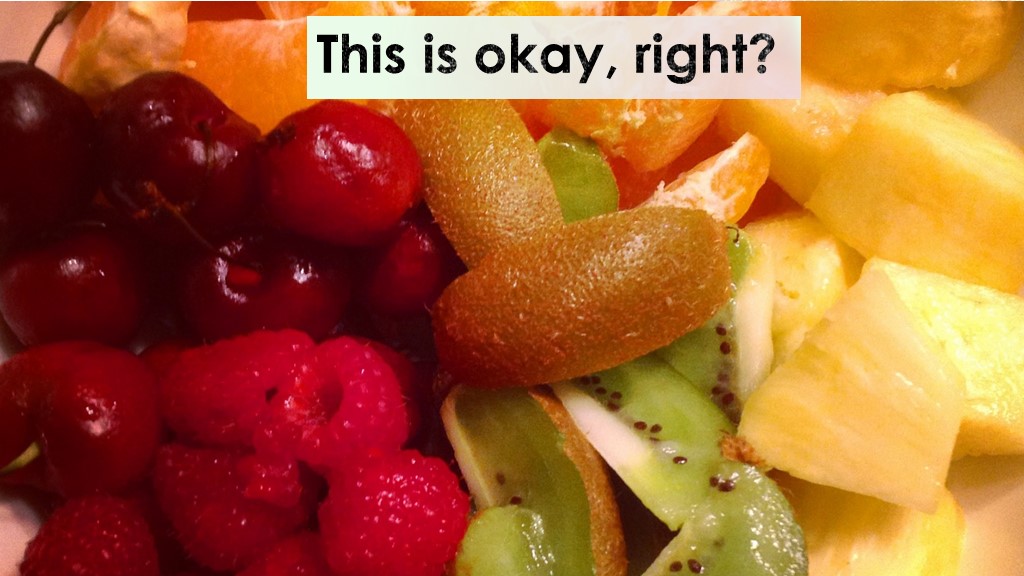
On Thursday, January 7, 2016 the federal government released its new dietary guidelines. Does anybody care?
While you may not turn to the national government for information on dieting, these new guidelines serve as a reminder on how to understand nutrition. Though we may not look to Nutritionist Uncle Sam for advice, these guidelines have implications from the supermarket to the doctor’s office.
Lessons to learn from the new guidelines:
1) Focus on the Big Picture
Nutrition is a symphony. It isn’t a single violin virtuoso, so stop fussing over individual ingredients and focus on the nature of what you are eating. Let’s not bicker and argue over which super-food is healthier: spinach or kale. Let’s start paying attention to how much space those vegetables occupy on our plates vs. the amount of processed oils, refined sugars, and meat we eat. Individual nutrients like calcium, vitamin D, and Iron are still a puzzle to researchers. Why does calcium in dark greens like kale and Moringa seem to strengthen our bones when calcium supplements have no impact? Maybe it has something to do with the full nutrition picture that a dark green brings: fiber, iron, vitamin C, vitamin K, and the carotenoids that fight free radicals.
Again, science is still trying to figure this out. In the meantime, though, let us focus on the full picture. Let us eat more healthy fruits, vegetables, and whole grains and less refined foods. Let us honestly examine our whole diet, not just focus on one or two healthy (or unhealthy) choices in a day. No matter how beautiful that violin soloist might play, it is the sheer power of a full orchestra that resonates harmony.
2) Food Labels are only a Start
These new guidelines can have a significant impact on the way our nutrition labels look. You might recall a big change that went into effect in 2006 that finally listed Trans Fats on the label. That was the effect of guidelines that explicitly stated the harm these fats can do. These recent guidelines take aim at added sugars, suggesting we limit our daily consumption to no more than 10% added sugars. As it stands today, food labels only list “sugars” without distinguishing what is naturally-occurring and what is added.
If you were to compare food labels today, a Snickers ® bar would seem the winner over two cups of grapes. The candy bar only has 20g of sugar while the grapes have a whopping 30g. If you accounted for added sugars, the Snickers bar would be at 100% while the grapes would be at 0%.
An example that is a little murkier is something like marinara sauce. Tomatoes naturally have sugar in them. However, many jarred marinara sauces add even more sugar to appeal to your sweet tooth. I’ve seen jarred marinara with up to 10g of sugar in ½ cup. Without knowing how much of that is added vs. natural, it becomes difficult to choose a healthier sauce.
Distinguishing added sugars would help empower you, as a consumer, to make more educated decisions about your foods. In the meantime, though, take power in your own hands by eliminating as many processed and refined foods as you can. Start cooking more, making things like Moringa Black Bean Burgers in large batches that you can freeze and use when you like. Start taking back control of your kitchen and your diet.
3) Cut Back on Meat…or “Protein”
The new guidelines state that men and boys consume too much protein. This is a nice way of saying they eat too much meat without actually taking aim at the cattle, poultry, or egg industries. As Marion Nestle, renown professor of nutrition and public health at New York University says: “If the Guidelines really focused on dietary patterns, they wouldn’t pussyfoot. They would come right out and say: Eat less meat.” At least this is a move in the right direction.
4) Get a Second Opinion
These guidelines will impact federally funded programs. This includes Medicare and Medicaid, two programs that serve the elderly and those at a lower income level. These two groups have consistently faced greater predisposition to preventable disease like diabetes and heart disease. Doctors receive little (if any) nutrition education in medical school.
These guidelines will impact the advice doctors give patients. Yes, we know 300mg of cholesterol is not good. But will a doctor tell you that the amount in just 2 eggs exceeds that? Will he tell you that only animal products have cholesterol? That it’s in grass-fed beef, chicken, turkey, and hormone-free cheese? That you consume cholesterol even in lean animal protein like shrimp and seafood? That plants never have cholesterol? And that the fiber in plant foods like whole grains, beans, fruits, and vegetables have been shown to naturally lower cholesterol? Or will he write a prescription for Lipitor?
Some don’t know. Get a second opinion. Do your research. Be your own advocate. Share with loved ones.
One way to find a doctor who considers the role nutrition plays on health is to find one through the Physician’s Committee on Responsible Medicine. This group argues for legislation that requires more nutrition education for doctors and has filed lawsuits attacking the conflict of interest between the egg industry and the council who set these new guidelines.
5) Get Involved
These guidelines will affect other federally funded programs including the School Lunch program, which spends $16 billion dollars and reaches 31 million children. They will impact the $4 billion Special Supplemental Nutrition Program for Women, Infants, and Children, also known as WIC, which serves 8.3 million people. They will impact farm subsidies. The guidelines admittedly ignored any environmental considerations regarding diet. If you are affected by any of these, get involved. Learn how you can speak up, take action, and become an advocate. Something as simple as packing your own child’s lunches can help create healthy eating habits for a lifetime. As I’ve written about before, choosing to go meat-free for just one day a week can greatly cut down on carbon emissions.
While you may not be thinking about Uncle Sam the next time you are making a salad, the truth is these guidelines have implications that affect us from the first grade lunch table to our grandparent’s health check-up. Let us continue to be educated consumers, devouring knowledge with our big bowl of broccoli.
Resources:
NY Times Blog: New Dietary Guidelines Urge Less Sugar for All and Less Protein for Boys and Men, by ANAHAD O’CONNOR. JANUARY 7, 2016 7:00 AM January 7, 2016 7:00 am: http://well.blogs.nytimes.com/2016/01/07/new-diet-guidelines-urge-less-sugar-for-all-and-less-meat-for-boys-and-men/?_r=0
Kuli Kuli Foods: What is Moringo Oleifera? https://www.kulikulifoods.com/moringa
Today News: Calcium supplements, dairy do little to protect bones, new study finds, by Maggie Fox. Sep. 29, 2015 at 5:47 PM: http://www.today.com/health/calcium-supplements-dairy-do-little-protect-bones-t47021
Prego Traditional Italian Pasta Sauce Nutrition: http://www.prego.com/sauces/favorite-sauces/traditional-italian-sauce/
Food Politics, Currently browsing posts about: Dietary-Guidelines by Marion Nestle, January 7, 2016: http://www.foodpolitics.com/tag/dietary-guidelines/
Food Politics: Physician’s Committee USDA Lawsuit: http://www.foodpolitics.com/wp-content/uploads/Physicians-Committee-USDA-HHS-Lawsuit-1.6.16-2.pdf
PCRM: A Cure for Doctors’ Lack of Nutrition Education, http://www.pcrm.org/media/online/may2014/a-cure-for-doctors-lack-of-nutrition-education
Plants-Rule: Would you cut meat one day a week to prevent climate change? December 9, 2015: http://www.plants-rule.com/blog/2015/12/9/would-you-cut-meat-one-day-a-week-to-prevent-climate-change







